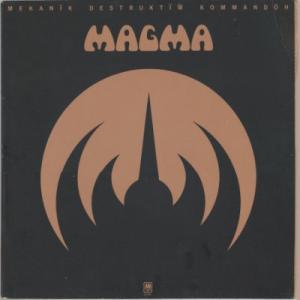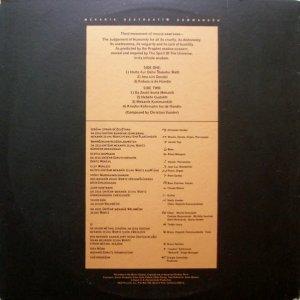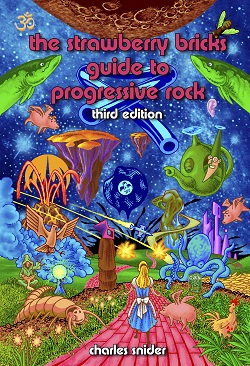Mekanïk Destruktïw Kommandöh


| Tracklist | |||
| A1 | Hortz Fur Dëhn Stekëhn West | 9:36 | |
| A2 | Ïma Sürï Dondaï | 4:30 | |
| A3 | Kobaïa Is De Hündïn | 3:34 | |
| B1 | Da Zeuhl Wortz Mekanïk | 7:48 | |
| B2 | Nebëhr Gudahtt | 6:02 | |
| B3 | Mekanïk Kommandöh | 4:10 | |
| B4 | Kreühn Köhrmahn Iss De Hündïn | 3:13 | |
Bass - Jannick Top
Brass, Flute - Teddy Lasry
Choir - Doris Reinhardt
Choir - Evelyne Razymovski
Choir - Michèle Saulnier
Choir - Muriel Streisfeld
Choir - Stella Vander
Clarinet [Bass], Vocals - René Garber
Drums, Vocals, Organ, Percussion, Written-By - Christian Vander
Engineer - Ed Sprigg
Engineer - Gilbert
Engineer - Gilles Salle
Engineer - Simon Heyworth
Engineer - Steve Michell
Engineer - Tom Rabstener
Guitar - Claude Olmos
Other [Stage Manager] - Loulou Sarkissian
Piano, Organ - Jean-Luc Manderlier
Producer - Giorgio Gomelsky
Vocals, Percussion - Klaus Blasquiz
Recorded at the Manor Studios, England and at Aquarium Studios, Paris.
Third movement of Theusz Hamtaahk.
Gatefold sleeve.

